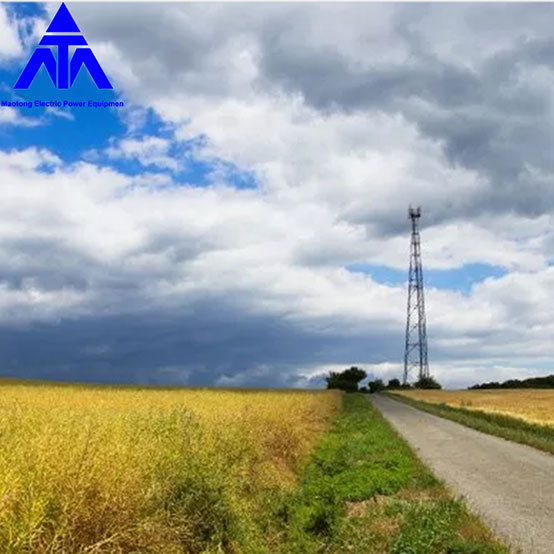Evolution in Telecommunications: Impact of Small Cell Networks and Distributed Antenna Systems on High-Density Telecommunication Tower Steel Pipes
2024-02-20
In the fast-paced world of telecommunications, innovation is constant, driving the evolution of network infrastructure to meet the growing demands of users for seamless connectivity and high-speed data transmission. The emergence of small cell networks and distributed antenna systems (DAS) represents significant advancements in telecommunications technology, revolutionizing the design and deployment of high-density telecommunication tower steel pipes. Let's explore how these advancements are reshaping the landscape of telecommunications infrastructure.
Small Cell Networks: Pioneering Connectivity in Urban Areas
Small cell networks are a game-changer in urban environments, where traditional macrocell towers face challenges related to capacity, coverage, and signal propagation. Small cells, compact radio access nodes deployed in densely populated areas, enhance network capacity and coverage by offloading traffic from macrocell towers and providing localized coverage to high-traffic areas such as city centers, stadiums, and shopping malls. The design and deployment of high-density telecommunication tower steel pipes are integral to supporting the installation of small cell antennas at optimal heights and locations, ensuring seamless connectivity and improved network performance in urban environments.
Distributed Antenna Systems: Enhancing Coverage Indoors and Outdoors
Distributed antenna systems (DAS) represent another innovation in telecommunications technology, enabling the extension of wireless coverage and capacity indoors and outdoors. DAS consists of a network of antennas strategically distributed throughout a geographical area, connected to a centralized hub via fiber optic or coaxial cables. By distributing signals more efficiently, DAS improves coverage, enhances signal quality, and increases data speeds for users in buildings, campuses, stadiums, and transportation hubs. High-density telecommunication tower steel pipes play a critical role in supporting the installation of DAS antennas at various heights and locations, ensuring comprehensive coverage and seamless connectivity across diverse environments.
Impact on Design and Deployment of Steel Pipes
The emergence of small cell networks and distributed antenna systems has a profound impact on the design and deployment of high-density telecommunication tower steel pipes:
1. Height and Location Optimization: Steel pipes must be designed and deployed to accommodate the installation of small cell antennas and DAS nodes at optimal heights and locations to maximize coverage and capacity in targeted areas.
2. Space Efficiency: Compact designs and slimline profiles may be employed to optimize space utilization and minimize visual impact when integrating small cell antennas and DAS nodes within existing telecommunications infrastructure.
3. Capacity and Scalability: Steel pipes must be engineered to support the increasing capacity and scalability requirements of small cell networks and DAS deployments, ensuring the flexibility to accommodate future upgrades and expansions.
4. Interference Mitigation: Careful planning and coordination are necessary to mitigate interference issues and ensure compatibility between small cell antennas, DAS nodes, and existing infrastructure to optimize network performance and reliability.
Conclusion
Advancements in telecommunications technology, such as small cell networks and distributed antenna systems, are revolutionizing the design and deployment of high-density telecommunication tower steel pipes. By enabling the integration of small cell antennas and DAS nodes within existing infrastructure, steel pipes play a crucial role in extending coverage, enhancing capacity, and improving network performance in urban and indoor environments. As telecommunications technology continues to evolve, the design and deployment of high-density steel pipes will remain pivotal in supporting the seamless expansion and evolution of telecommunications networks, driving connectivity and innovation in the digital age.



